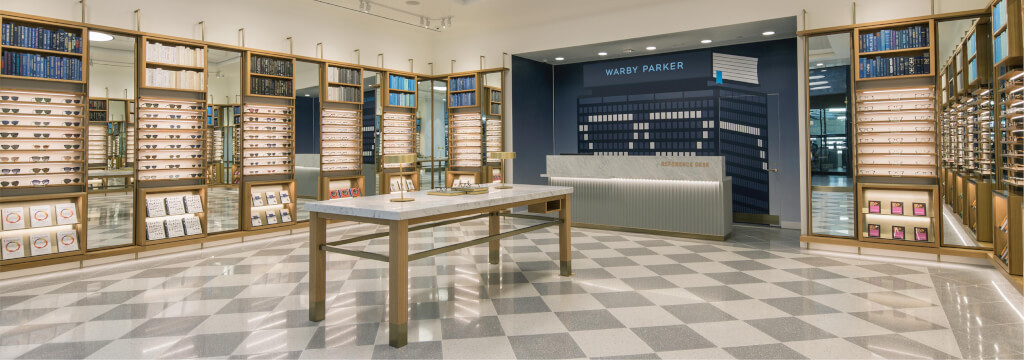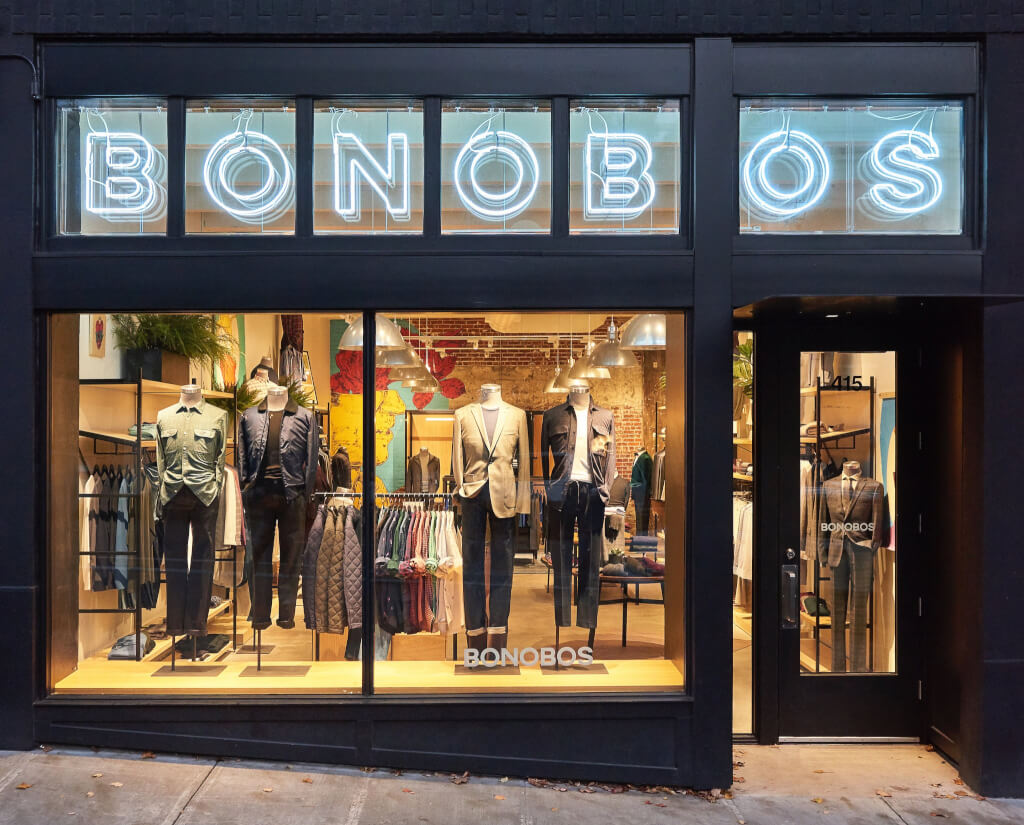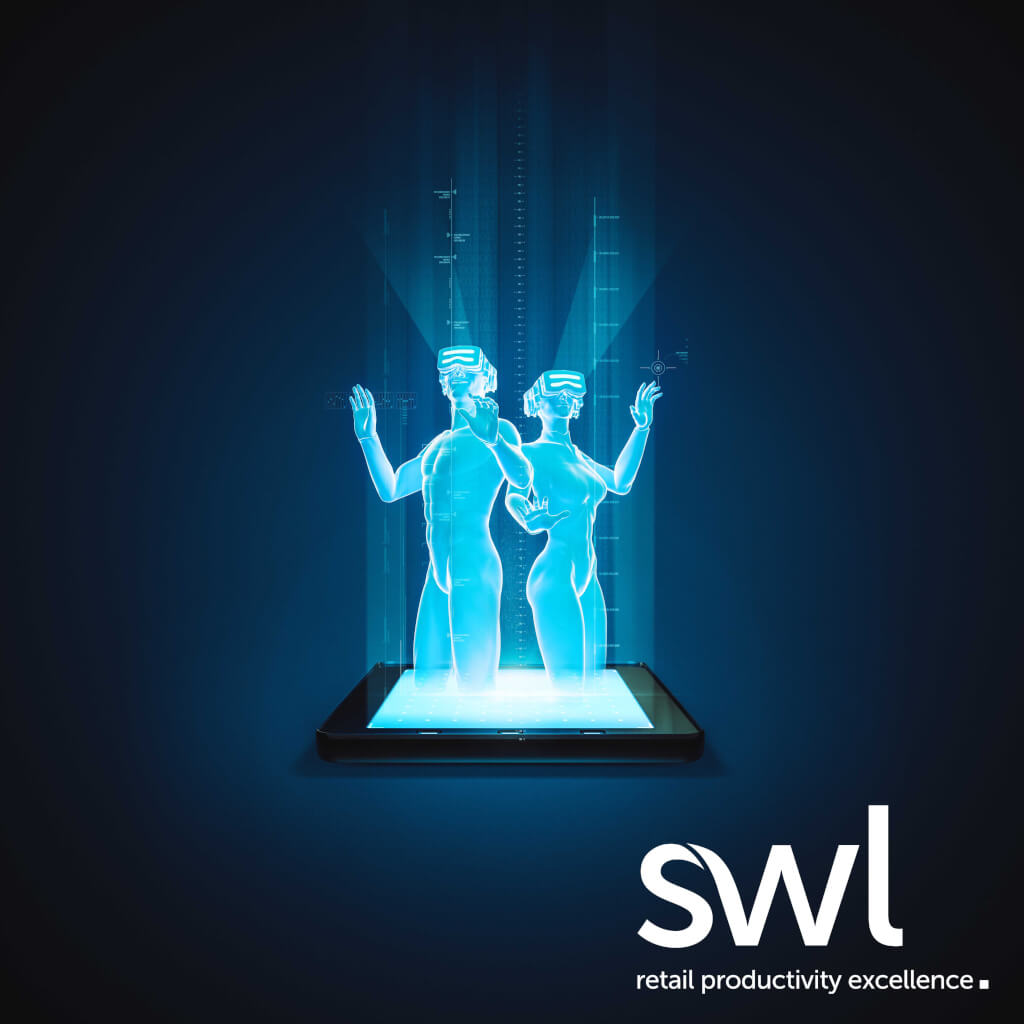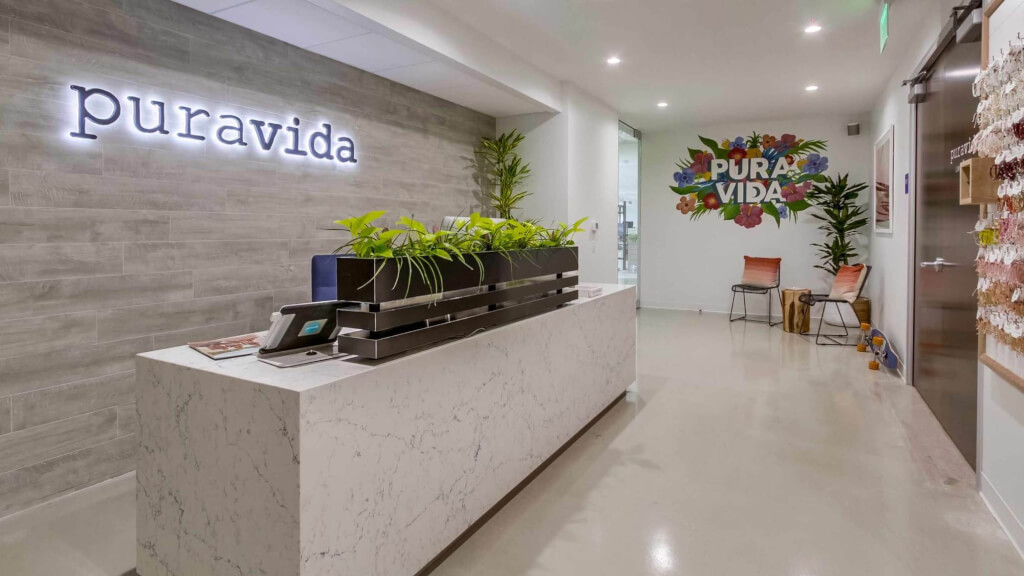This SWL article on the current huge paradigm shifts in customer engagement and the retailer offer synthesises a number of excellent articles from fellow thought leaders. These include MIT Sloan and Forbes, as well as a number of significant individual commentators on retail trends. We attempt to make our way through a dazzling but exciting new universe of possibility, with Disruption, Spatial Web and the promise of small footprint stores at the heart.
In an excellent 2018 article by MIT Sloan Senior Associate Editor Ally MacDonald entitled ‘How Retail Responds to Disruption’, she focused on the huge growth in digital agility and technology spending in the retail sector, which would top $200 billion in 2019.
Whilst not strictly prophetic, her analysis is never truer as we move into our current decade. Increasingly, retailers are prioritising ‘key digital capabilities’ from ‘analytical and e-commerce tools to mobile and emerging technologies such as AI and machine learning — in order to avoid displacement in the new digital economy and find new opportunities with customers.’ It is easy to look with doom and gloom at the struggles of the High Street to survive in this newly disruptive and infinite space. But it is also clear that retail is booming. The customer is merely enjoying an ever-evolving disruptive, multi-channel world. Therefore, this is a time for enormous potential and opportunity for retailers.
MacDonald cites three ‘principles’ that demonstrate how the more forward-thinking retailers are improving customer experience by embracing disruptive technologies. We highlight two of these here, and illustrate them with other contributions from Retail Technology thought leaders:
1: ‘Leading with a small footprint and high experience’
The message to retailers is clear: ‘Being competitive in the retail market today means being able to learn and adapt more quickly to the experiences that customers want. And while customers want great online experiences, this does not mean that brick-and-mortar will be a thing of the past any time soon.’ This positive mantra on the physical shopping experience is a pervasive one. So, are rumours of the High Street’s demise greatly exaggerated?

Warby Parker’s small-footprint ‘showroom’ store.
In this context of ‘Disruption’, with its negative linguistic associations, the author cites the 2018 MIT article ‘The Store Is Dead — Long Live the Store’ (referenced below), which amply illustrates this retail double-think. It highlights Warby Parker and Amazon’s pioneering work in delivering a ‘showroom’ experience for customers.
‘Showroom experiences create better customers: Customers are exposed to the brand in a more meaningful and immersive way, and they are better able to resolve any uncertainty about the non-digital attributes of the retailer’s products. Likewise, showrooms create better retailers: When customers are physically present in the retail environment, observation of their behaviors can lead to meaningful insights. Salespeople can anticipate and respond to customer needs, provide exceptional service, recommend additional items, look for signs of customer discomfort, and so on.’

Bonobos ‘GuideStore’ success story.
Some years ago now, The Economist praised fashion retailer Bonobos for ‘pioneering a new form of physical retail’. These ‘zero-inventory’ stores, or ‘GuideStores’ are a small-footprint showroom-style store where customers can enjoy excellent person-to-person and technology-assisted service, a tactile experience, purchase via tablet, and have the product delivered to a location of their own choosing. In terms of shop floor square footage, less can definitely be more.
A 2020 Shopify.com report cites Pura Vida, ‘a fast-growing maker of handmade string bracelets and accessories, takes an omnichannel approach by bridging the digital and physical worlds. Born online, the brand was built on the backs of social media platforms and has millions of followers and fans. However, Pura Vida recently launched a retail experience through social media that allows consumers to interact with the brand in the real world.’
Link to Shopify’s review of Pura Vida
2: ‘Embracing immersive technology’

Embracing immersive technology – Augmented Reality
Voice technologies and AI have made great advances in the customer experience in recent years, with the conversational digital supply chain using technologies such as machine learning and internet of things (IoT) sensors to ‘improve market responsiveness and agility’. This is far more sophisticated than the customer simply using voice commands to place orders or ‘speak’ to customer service avatars. For the customer, there are huge benefits in faster shipping, reduced costs and ease of interface. This in turn helps retailers ‘strengthen their resilience against disruption.’
Gartner Group predicted that ‘brands supporting voice search capabilities on their sites will increase digital commerce revenue by 30%.’
The ‘Spatial Web’, aka ‘Web 3.0’ has already seen major strides in unleashing powerful customer power, and conversely, the knock-on benefit of retailer closeness to the customer. Forbes’ Daniel Newman (2019) echoes this in his prediction that ‘Augmented Reality’ (AR) – a kind of quasi-VR – is and will increasingly offer customers to virtually ‘try out’ products before purchasing. Even test drive a new model of car from Toyota. Importantly, several major retailers, including Target, Lowe’s and Amazon may help considerably in reducing the huge quantity (25%) of purchases that are returned. Interestingly, Microsoft recently launched a second generation of lighter headsets and wearable technology that will help to make AR less onerous and more immersive for both customers and employees.
Newman paints an enticing, even dazzling, picture of the near-future blurring of lines between ‘retail’, ‘virtual’ and ‘reality’:
‘A Mix of Reality and Virtual on the Spatial Web – Even beyond augmented reality, we’re going to see an increasingly confusing mix of digital/virtual and reality in the coming year, especially in retail via the spatial web. And I’m not just talking about virtual changing rooms. I’m talking about users being able to place themselves in their favorite brands’ advertisements, being able to model their favorite brands’ clothing, and an increasing coordination of virtual experiences that will intertwine on the spatial web. For instance, a newly engaged woman may try on her wedding gown virtually, and see herself walking through one of many possible wedding locations. A man who recently purchased a motorcycle can try on new gear and see how it feels on the motorcycle he’s just purchased. We may even see people paying for these virtual experiences, which makes the ideas of “retail” and “reality” themselves even more confusing.’
Igd.com’s Tony Pickard (2020) predicts the five technologies that he believes will impact the path-to-purchase in 2020: ‘Augmented Reality, Smart Carts and Smart Stores to autonomous delivery and unattended in-home delivery.’ Technology commentators Raja Mitra of medium.com and Peter Diamandis of Singularity University published cutting-edge articles in 2019 which highlighted the ‘ramifications of Web 3.0’, and the transformation that it will soon bring to our shopping experience. Changes Mitra describes as ‘new and exciting possibilities’.
Diamandis cites the ‘Web 3.0’ convergence of key technologies in making these possible: ‘ high-bandwidth 5G connectivity, rapidly evolving AR eyewear, an emerging trillion-sensor economy, and powerful artificial intelligence.
The current advent of 5G technology will greatly increase the speed and volume of data transmitted over wireless systems. The growth of IoT (The ‘Internet of Things’) heralds an era in which consumers will be constantly surrounded and aided by a plethora interactive devices and sensors. Web 3.0 will be powered by three broad types of technologies, Mitra believes:
‘A) Spatial computing technologies, like augmented and virtual reality.
B) Physical computing technologies, like IoT and robotic sensors;
C) Decentralized computing, including blockchain which enables greater security and data authentication and edge computing, which pushes computing power to where it’s most needed, speeding up critical and high-priority processes.’
Further, he aptly summarises this proliferation of the Spatial Web:
‘This digitization of life means that suddenly every piece of information can become spatial, every environment can be smarter by virtue of AI, and every data point about an individual and his or her assets, both of the physical and the virtual variety, can be reliably stored, secured, enhanced, and monetized even.’
Link to Singularityhub.com article
‘The Store Is Dead — Long Live the Store’: Supercharging Customers of Online Brands With Offline Showrooms

A recent success story of a showroom-style, offline/online jewellery business.
Forbes coined the concept, “supercharging” following a lecture by Lawrence Lenihan, CEO of Resonance Companies:
‘Supercharging occurs when customers are nurtured in a small-footprint location that typically holds no inventory — and fulfilled, initially (and subsequently, for repeat purchases), from an operationally efficient distribution center.’
The supercharging principle is compelling:
- ‘A customer who is exposed to the brand offline, rather than online, is not only more likely to peruse and sample a wider selection of product categories, but also is more immersed in the brand experience.
- This immersion and affinity serve to increase the rate and volume of subsequent purchases, whether online or offline, by an individual shopper.
- The experience also generates operational efficiencies by reducing returns. This is a critical virtue, as returns are a major headache for online sellers, often approaching 30%, and as high as 40% for apparel sellers.’
Forbes’ Pamela Danziger is one of many commentators to champion the future of the physical store. It’s time for retailers to ‘think about zero-inventory stores’. The appeal of this new approach is clear: capital is not tied up in maintaining stock levels. This means smaller store footprints, and bigger savings. Crucially, retail employees are freed up from merchandising and shelf-stacking to focus more time on the customer. First, while it is clearly a pressing priority for businesses to compete in the digital marketplace, their workforce must therefore be fully versed in these technologies, from store and warehouse employees, customer service teams, digital marketing and so on. Danziger leaves us with a strong message for supercharging and change alongside consolidating existing customer engagement skills:
‘One big message is that the physical store is alive and doing well. But now this research presents the option of how – when you think carefully about the experience and how to engage with the customer and hopefully supercharge the customer – you can do that with new and old tools alike.’
Link to Forbes Pam Danziger article
Experienced Retail experts and thought leaders SWL are perfectly suited to help your business navigate these new and exciting opportunities. We will examine your business from your DNA up, using accurate data fact on all your retail operations, to bring you invaluable insight for effective productivity improvements.
Call SWL today on 01527 895020 to arrange a discussion.

